We’ll also talk about what characteristics an ideal controller for a plant should have, and how to ensure its reliability when it comes to hazardous production.

Case 1 - how to gather information on the operation of the entire plant in a couple of seconds?
Imagine that the factory has 150 CNC machines. Each device will have to collect data: how many hours it was in operation, how much product was received at the output, which is the percentage of rejects. If you process all the information "the old fashioned way" manually and put it in a paper journal, you can go crazy.
At the same time, it is not enough to simply collect information: it would be nice to compare it with previous indicators, see if any machine is idle, find out why object number 5 is constantly breaking down, and the least number of products has been released from object 125 over the past year, although it works according to the general schedule.
Of course, you can hire a whole staff of such “paper” employees who will make reports and forecasts in the evenings, or you can automate the whole process: from the beginning - that is, from collecting information about the operation mode of each machine - to deriving accurate results for any interesting parameter ( downtime, hours of operation, breakdowns). And such data can be requested with a mouse click at least every 15 seconds.
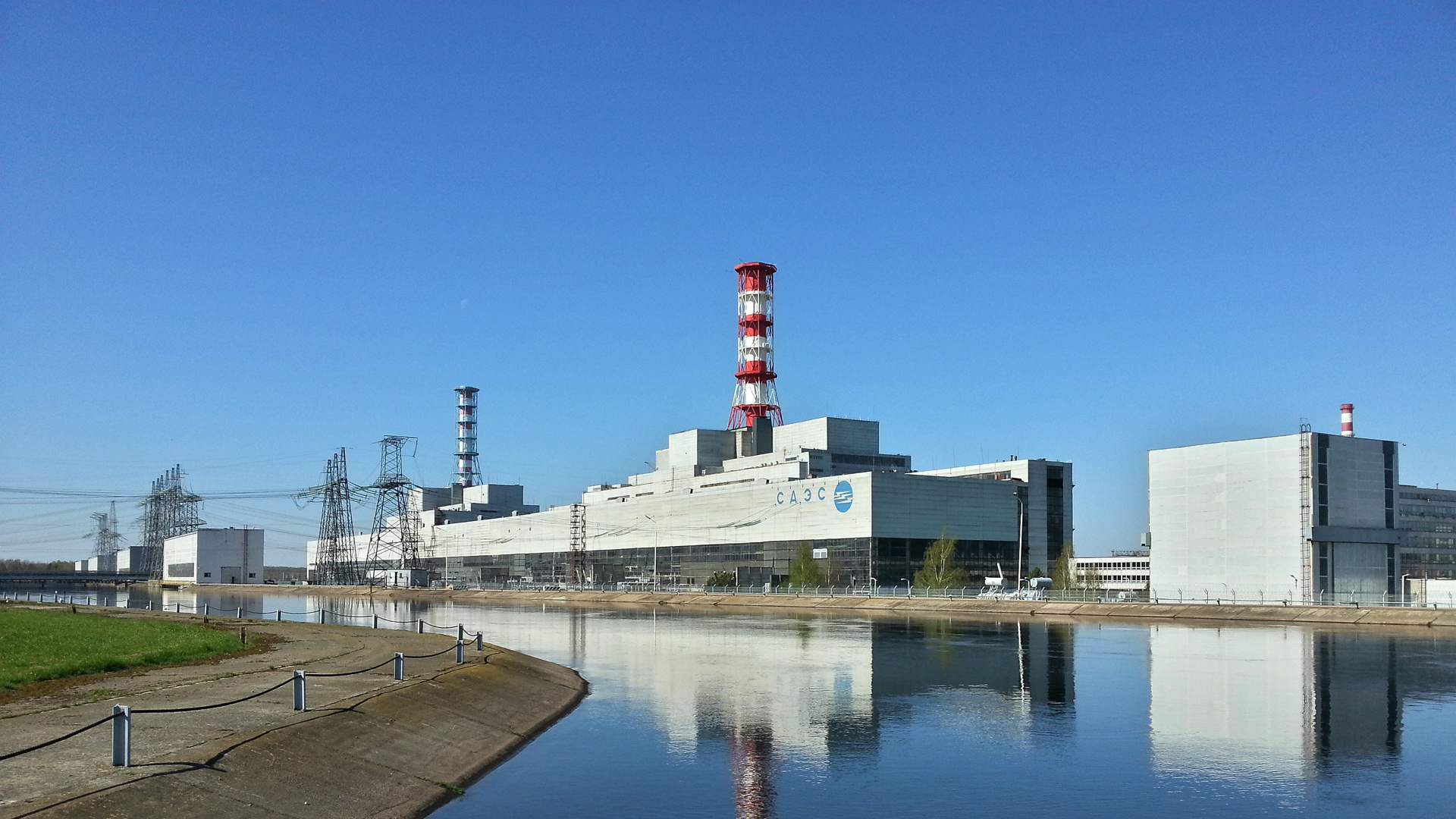
By the way, this solution is used at units 1 and 2 of Smolensk NPP - they introduced the eSOMS system there. Station employees have to make daily rounds to check equipment - this takes most of the work day. To shorten the procedure, each specialist was given a special device that calculates the optimal route for a detour.
So, the time of a full check was reduced by 20 times, and the quality of observation, on the contrary, increased. At the same time, the data obtained during the bypass was instantly transferred to the central information system, which independently analyzed them. A ready-made report along with recommendations was sent to operators for further decisions. The economic effect of reducing labor costs amounted to 45 million rubles per year.
Case 2 - Work with malfunctions, theft and marriage
The American company General Electric produces and services gas turbines. In order not to send their experts every time to check the equipment to the customer, they introduced remote monitoring. To do this, they developed a system that collects data from sensors and independently analyzes the operation of all turbines. So the company knows exactly when the equipment will need repairs.
The total benefit for enterprises that bought General Electric turbines is estimated at $ 100 billion a year - all due to the lack of unscheduled restoration work.

Often the factories live by the principle: broken down - repaired, work on. IIoT-technology will allow you to get away from repairs after a breakdown to a system of fault forecasts (for example, the program will warn you that certain parts need to be replaced). And if machine number 5 somehow fails with enviable regularity, the system will take this indicator into account and notify operators. All that remains is to see what the problem is: maybe the equipment is being used incorrectly or poor-quality raw materials have been delivered.
The sensors accurately determine how much work began on each machine and how many parts were produced by the end of the shift - therefore, employees will not be able to use the factory equipment for personal purposes, this will immediately be seen in the final statistics on the operation of the machine.
The same sensors will help solve the problem of marriage. They will determine whether a malfunction in the equipment settings or improperly selected material caused the appearance of curved parts.
Since 2001, the Russian company ODK-Saturn has been supplying gas turbine engines for military needs and energy. In 2018, they began working on a digital twin of the production hall - a virtual model that mimics the real production cycle. During its development, the location parameters of all equipment, the ratio of manual and automated processes, and workshop features were taken into account.

Such complex enterprises as UEC-Saturn cannot play with experiments to improve production - it is too dangerous and unpredictable. But the digital double allows you to test any innovation, simulate scenarios and determine the most accurate effect of the implementation. The solution allows you to control the real production: the technology calculates the work cycle, costs and compares them with real data.
The double must constantly adapt to the plant’s operating mode, the only way to create an exact copy of real production. For this, the developers connected all the equipment to the network: sensors and sensors provide communication between the machines and the digital double of the workshop.
Director for Economics and Finance of PJSC UEC-Saturn Pavel Becher noted that working with the digital double has significantly reduced the cost of production of the plant.
Case 3 - if only the plant was safe
The Langnese ice cream factory in Germany employs more than a thousand people in one shift. In production, liquid ammonia is used. To protect employees, the plant installed sensors that respond to the level of ammonia. When the concentration of a substance in the air rises, alarms are triggered, and all employees receive notifications.
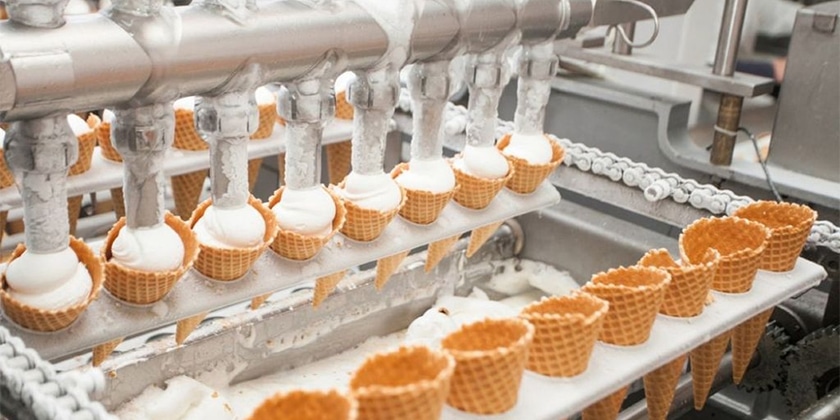
The microclimate, the level of lighting and noise, the concentration of harmful substances - all these indicators can be regulated using a sensor system in a factory of any type.
By the way, the security system helps to save. For example, a plant in workshop A needs to be kept low to extend the life of the equipment. In workshop B, on the contrary, the temperature should be above normal. And on the floor with the offices of engineers, it is necessary to provide climatic conditions comfortable for employees.
The St. Petersburg plant of electronic products "Engineering" faced such a challenge. To create thermal zoning of the facility, 550 sensors and devices were installed there for remote monitoring of all indicators. Over the four months of operation, the IIoT system saved 48% of the money spent on heating the building.
About the controller
It will not be possible to deploy an IIoT solution at the factory without a controller; it is the core of any system - the primary information processing center. It receives data from sensors and is then sent either to the "cloud" or to executive devices.Since Kauri is also involved in the development of IIoT solutions for factories, we have created our own controller, which is ideal for any production. As far as we know, most controllers are sharpened for one task (or for several tasks, but in the same industry: controllers for fuel columns, for home automation in general, for light control in particular, for metering electricity in gardening, and so on). We set ourselves the task of creating a universal controller that could support all existing communication modules. At the same time, be able to not install those that are not useful to the customer, so as not to overpay for unnecessary functions. We created a controller based on the i.MX 8M Mini processor.
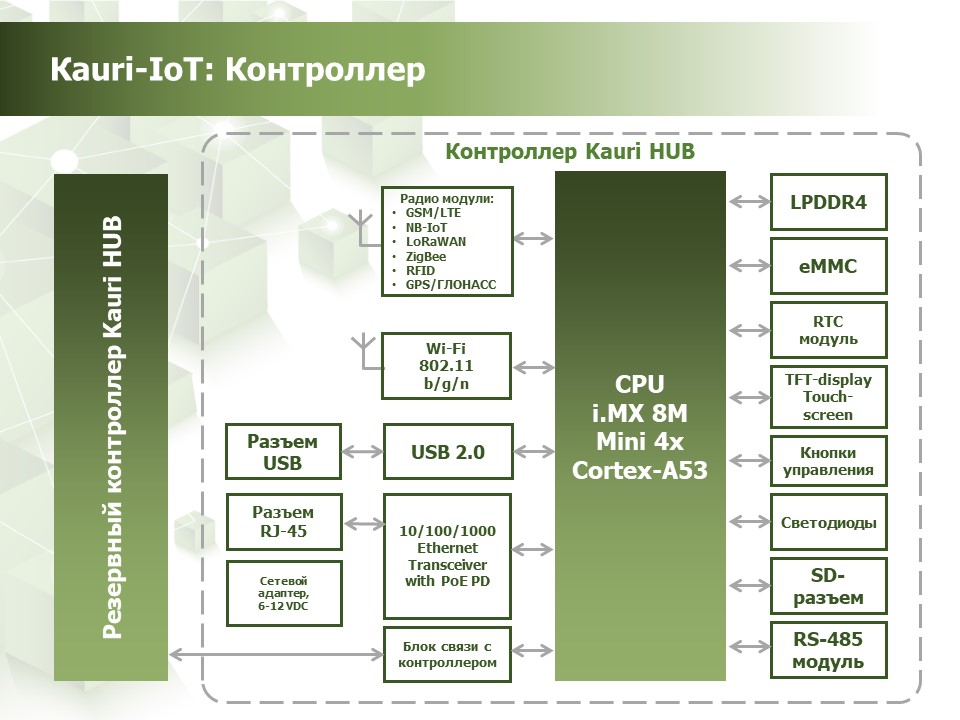
The controller must support a certain type of communication, which will be convenient for the plant. For example, if this is a small production, and there it is enough to track the movement of employees, RFID is suitable. In principle, it is difficult to do without RFID technology, since it provides a smart access and control system. RFID tags are attached, for example, to manufactured parts in order to control all movements in the workshop in the desired sequence.
For a large plant, the LoRa module can be useful for collecting and transmitting telemetry from all over the territory. To monitor moving objects (for example, working equipment), you need a GPS / GLONASS module.
A separate topic is the characteristics of the operating conditions of the controller. Based on the characteristics of the plant. If we will install the controller in a humid or dusty environment, IP66 is needed. If the controller will work under water - IP68. In some cases, additional processing of the controller board may be necessary, providing a high degree of protection against vibration or mechanical shock.
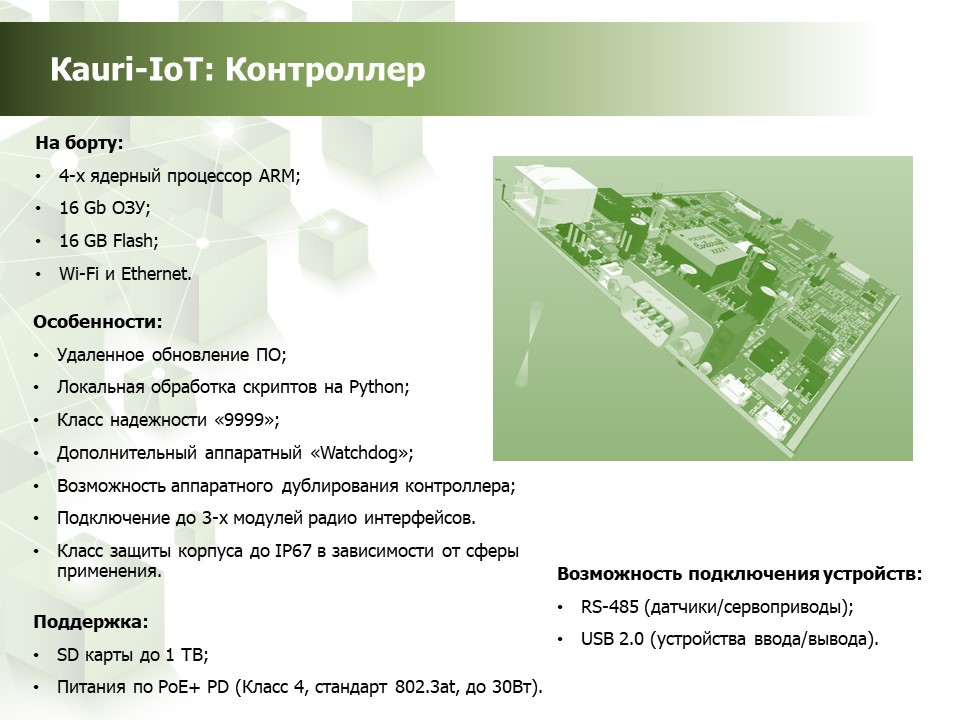
By the way, we took care of the safe operation of the controller. If for some reason the controller at the nuclear power plant fails or starts to work with errors, it will be sad. Therefore, we provided for the possibility of hardware duplication of the controller - a backup controller, which in case of malfunctions will take over all the tasks of the main one.
How will this happen? The main controller "communicates" with the backup using binary code. For example, once every 20 ms it sends a certain command (conditional 55 in binary code). If suddenly a changed command arrives or does not come at all, the backup controller will turn on.
We made a controller of 99.99 reliability class. The last nine was added due to the hardware Watchdog timer - WDT (external device with a timer). The controller must access the device, for example, once per second (confirmation that the processor is working properly). If in the next second the controller freezes and does not contact, WDT restarts the system.
Well, we also did not forget about the remote software update.
What hinders the modernization of plants?
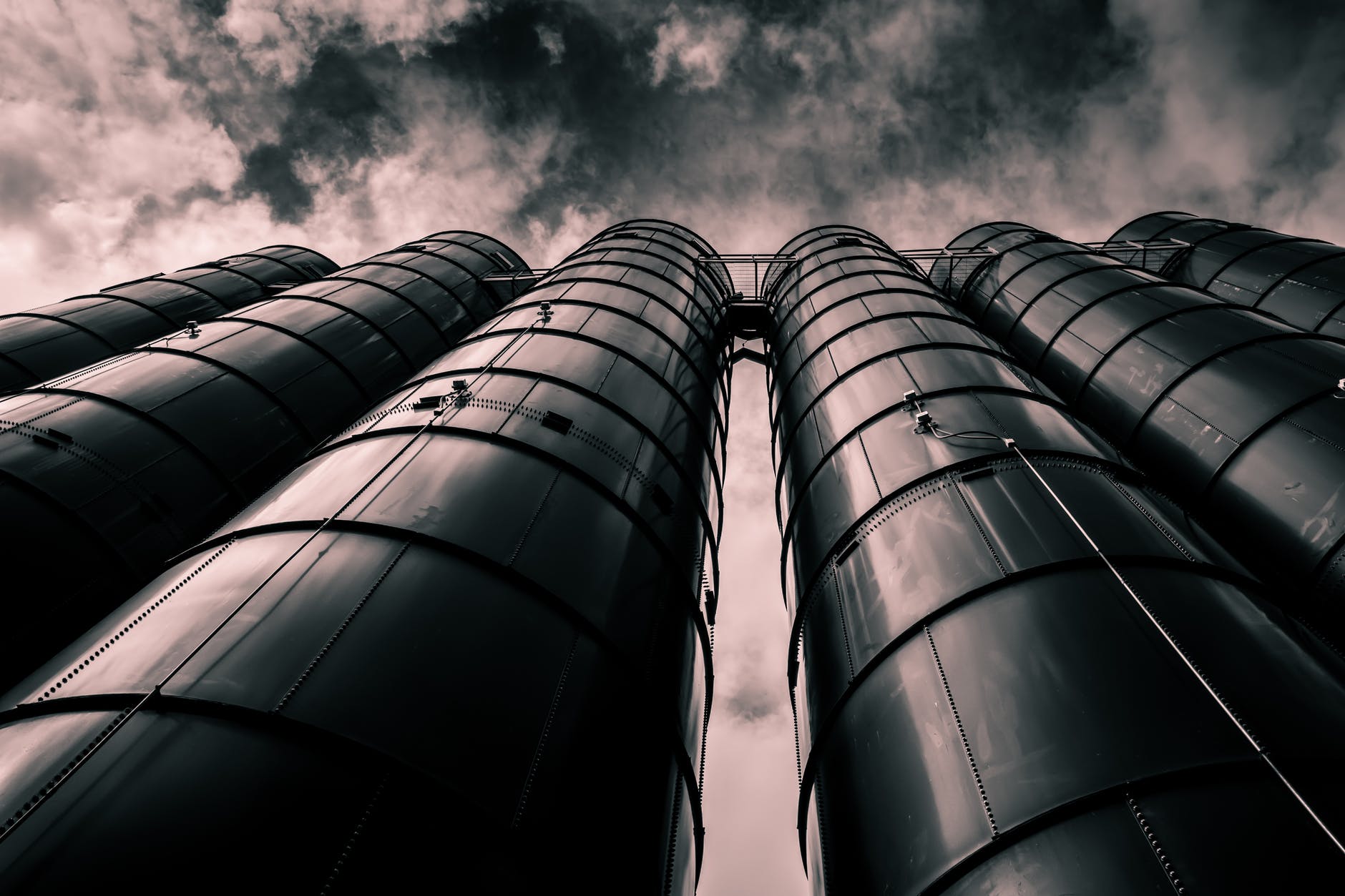
The effects of the implementation of IIoT solutions are very noticeable. A Tadviser study for 2018 showed that the industrial Internet of things will help increase production by 70%, and security by 60%. At the same time, analytics and forecasts made with the help of smart devices, or rather ordinary ones, assembled “manually”, are almost doubled.
In 2018, the Tadviser portal evaluated the level of readiness of plants for the use of IIoT technologies as the initial one. At most Russian enterprises, even a third of the equipment is not covered by sensors of the industrial Internet of things. As part of the study, the portal also invited the owners of Russian plants to indicate the reason why they are not ready to implement complex IoT solutions. The main arguments “against” came down to the reluctance to spend money on the project, the staff’s unpreparedness for new technology and a lack of understanding of the monetary gain.